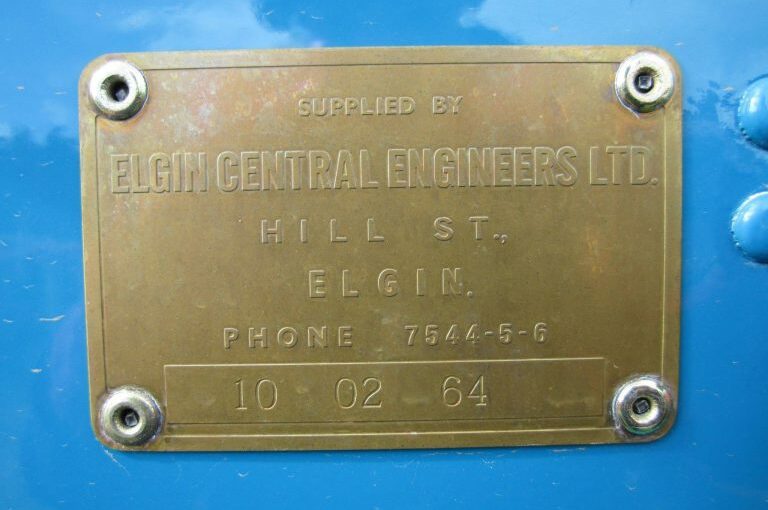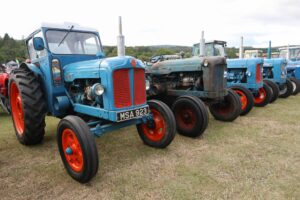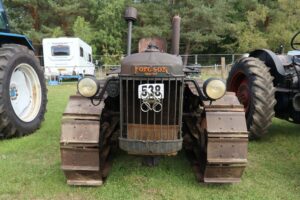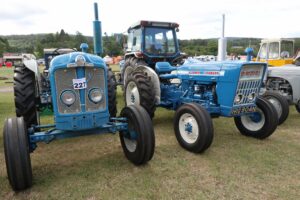As we have noted, one of the important names in agricultural engineering in the north of Scotland was Elgin Central Engineers. In 1967 the business underwent a significant expansion with the opening of its works at Moycroft, Elgin.
The Aberdeen press and journal carried an extensive feature of the business, and its development, in its pages of 15 November 1967. Today we will hear about some of the early history of the Ford franchise. We quote at length:
Aberdeen press and journal, 15 November 1967
Ford “men” for 40 years
As is said elsewhere in this report on the move of Elgin Central Engineers to Moycroft, for 40 years they have held the Ford franchise and have been distributors for Ford for longer than most in this area.
And in this, Ford’s jubilee year, it is interesting to recall that just over 50 years ago mechanised farming came into its own. The world’s first mass-produced tractor came off the assembly line on October 8, 1917.
And perhaps the fact least known about this historic date is that Henry Ford, father of the mass-produced car, also originated the mass-produced tractor.
From boyhood on his father’s farm at Dearborn, Michigan, USA, Henry nursed an ambition “to lift farm drudgery off flesh and blood and lay it on steel and motors”.
But it wasn’t until after the Ford Motor Company was well established and turning out cars by the hundreds of thousands that Henry Ford seriously began work on implements to mechanise farming.
By early 1917 he had turned out more than 50 experimental tractors. Even then he would not have begun tractor production until much later but for the influence of World War I.
Allied shipping headed for Great Britain was being sunk at the rate of half a million tons a month. Food imports-upon which Britain depended for nearly 700% of her food supply – were alarmingly short. To survive Britain had to increase food productivity. Farm mechanisation appeared to be the only hope.
Of several experiments conducted with tractors by the British Royal Agricultural Society, two Ford models were hailed as “a lightning flash from the clear sky of tractor engineering.”
Lord Northcliffe was dispatched by the British Government to enlist Henry Ford’s support. At first Mr Ford was reluctant to go into immediate production. He felt that the models he had could be improved.
According to one observer, Lord Northcliffe argued: “We understand your objection. We ourselves have many new military devices in blueprint but we have to use the weapons and machines we have and try to win with what we’ve got.
“We need a tractor. Yours is the best we can get. We can’t wait for the perfect tractor, we need what’s available and we want you to produce it.”
The first Ford tractor for Britain rolled off an assembly line at a small plant in Michigan Avenue and Brady Street at Dearborn. It was called a “Fordson”.
The Fordson weighed 2500 lb, was powered by a four cylinder, 20-horsepower engine, and had three speeds and a reverse operated by a multiple disc clutch, and was fuelled by petrol or paraffin.
Within seven months after Henry Ford began mass production of the Fordson the entire. British order of 7000 tractors had been delivered.
The Fordson proved durable and reliable as well as economical; it helped speed up British food production to such an extent that one British spokesman stated that without it “the food crisis would in all probability not have been surmounted.”
After meeting the British order henry Ford turned to the American market with his new concept in lightweight, low-cost design. Within three months he was avalanched with 13,000 orders.
With the economies of mass production placing the tractor within reach of the average farmer, Fordson sales soared. So much so, that in some years during the 1920s 75% of all US tractors built were Fordson.
That was the beginning of an organisation that now ranks as one of the world’s largest tractor producers.”
The photos were taken at the Deeside rally, August 2022.



